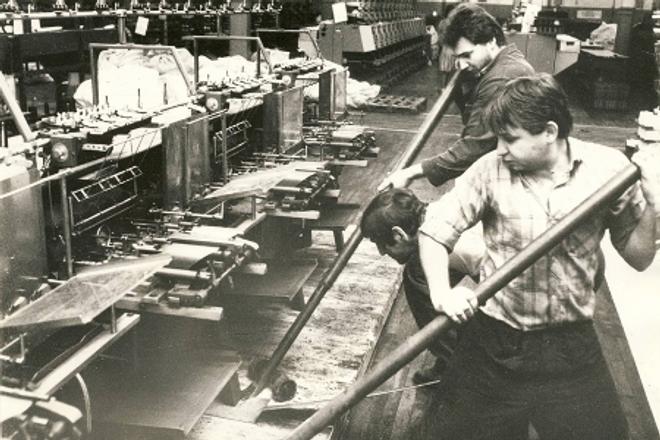THE TEXTILE factory known colloquially as ‘Cvernovka’ (cverna means thread) had a long and illustrious history, which is now being shown in a series of period photographs and items. The plant, which launched its first production in 1902 and survived five political regimes, four generations and two world wars, was closed in 2003 through a bankruptcy proceeding. The current exhibition (and the accompanying book and documentary film planned for early next year) draws attention to this special Bratislava institution.
The exhibition takes place in the complex of the factory itself, on Páričkova 18, in one of the smaller spaces still used for creative industry by the local studio Ateliér Bavlna (bavlna means cotton in English). It can be seen on November 8, 9, and 10 between 12:00 and 20:00, with a guided tour slated for November 9, with knitting and photography workshops on November 10.
Panel discussions with local politicians, civic activists and experts - including the Bratislava’s chief architect Ingrid Konrad - on the future use of the now non-functional factory took place on the weekend of October 26 and 27. However, nobody from the Monuments Board participated, “which shows the interest of those who should be involved the most”, organisers commented.
Cvernovka was founded around 1895 by two Austrian businessmen, Juraj Richter and Josef Salcher, who founded the Great-Hungarian Thread Company in 1900. There were two buildings: one near Trnavské Mýto was built between 1907 and 1908, and the bigger complex on Páričkova was built gradually between 1900 and 1930. The company operated during the whole of the 20th century. After it was closed in 2003, it changed owners several times and now it belongs to the Hamilton Group, which has plans to redevelop the site and already demolished the building, boiler room and dye-shop in 2012, but since then, all work in the complex have stopped.
But Cvernovka still lives on, as many studios, designer workshops, and Galleria Cve-rnovka / Uzol kultúry (Culture Node) continue to operate and even organise events for the creative community and the wider public. How-ever, a progressive bookshop, Alexis, which was awarded for the reconstruction of its premises, had to move out not long after it received the architectural prize.
Of the organisers, Ateliér Bavlna and Open Design Studio, Viliam Csino and Martin Mistrík (as well as a very sociable dog, Žofka) guided journalists along the exhibition, which shows mainly photos of Cvernovka’s history and some materials (including still intact cotton patterns), swatches and devices used to make, dye and pack the cotton threads. Visitors, especially those interested either in Bratislava and its history, or the industrial past, leave with a bittersweet feeling as a big question mark looms over the future of the whole complex, the biggest building of which is already a protected monument. As things are still in the process of development, there is hope, as minute as it may be, that the planned movie and book – conceived as bilingual, also in English, unlike the current exhibition – will have some-thing closer to a happy ending.



 Cvernovka while operating as a thread factory (source: SITA)
Cvernovka while operating as a thread factory (source: SITA)